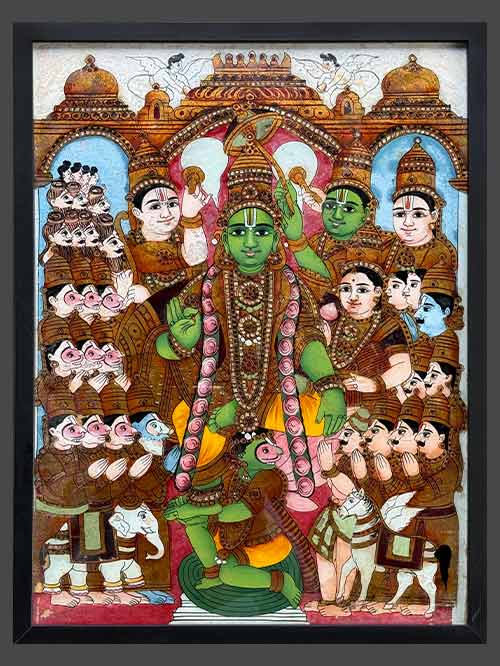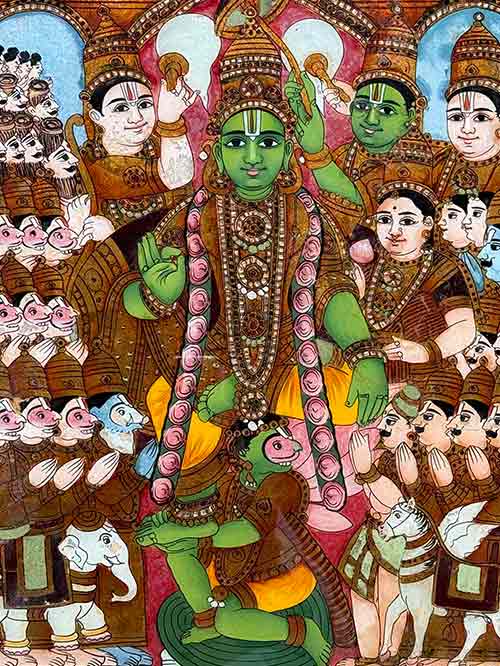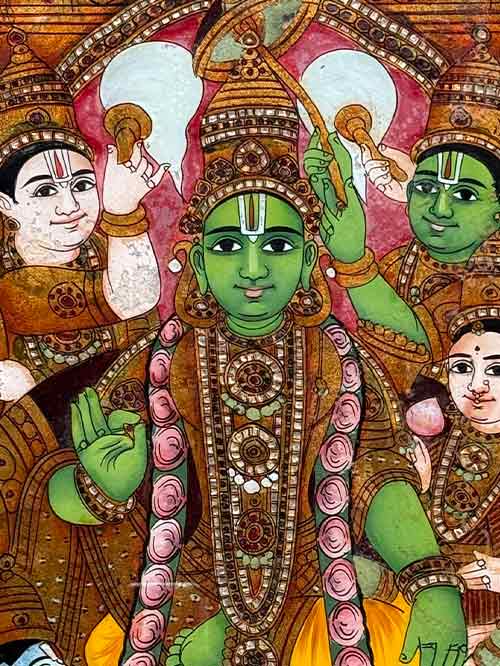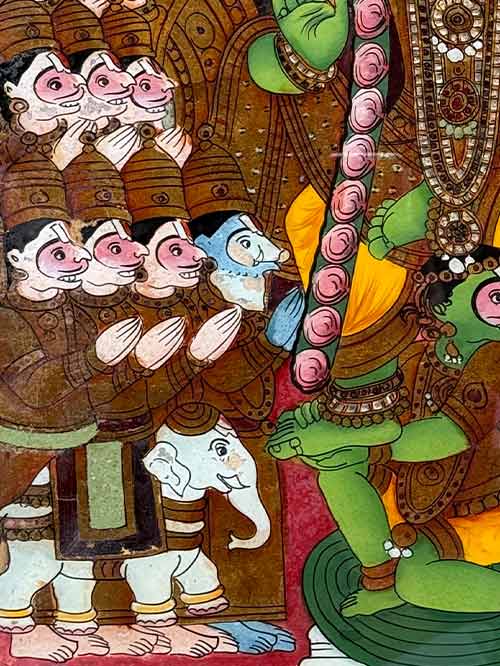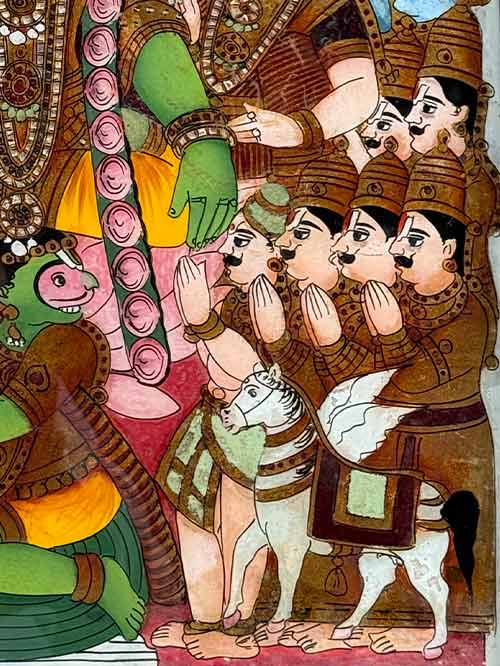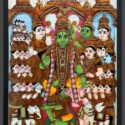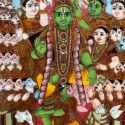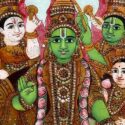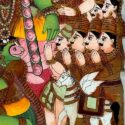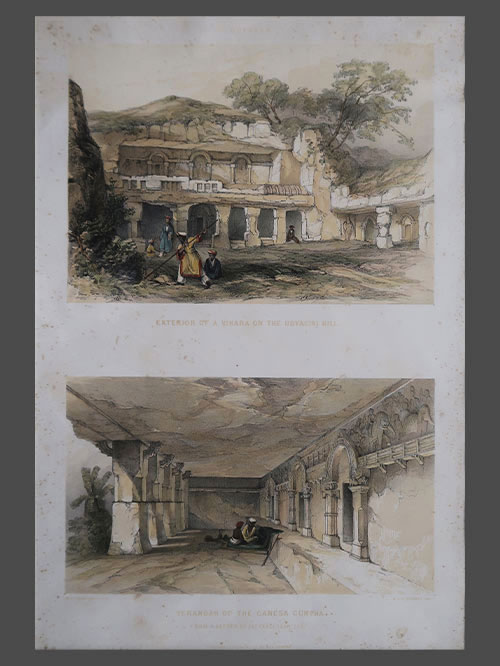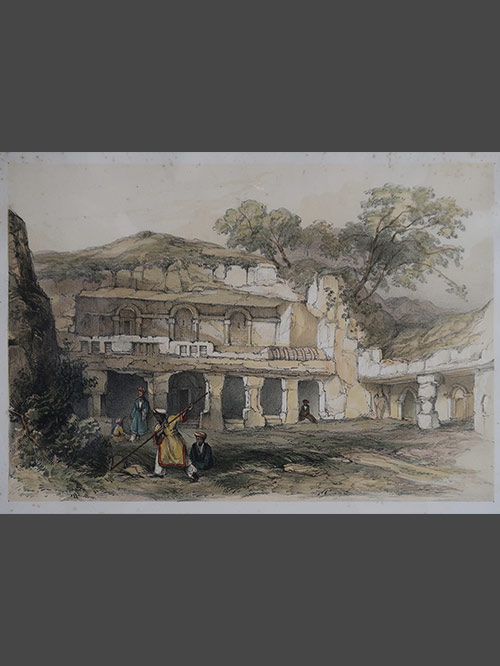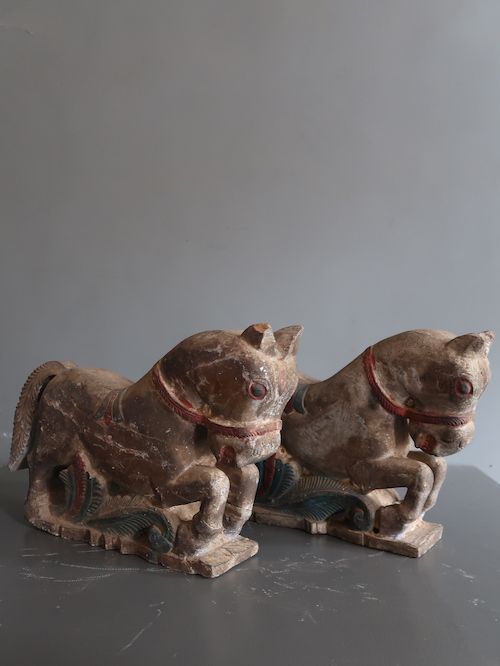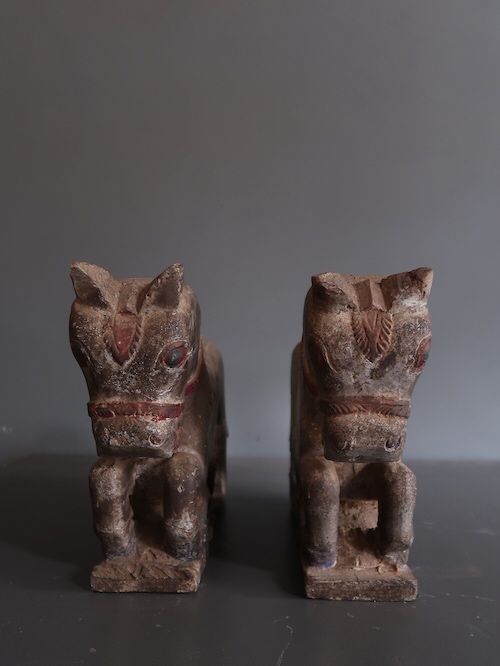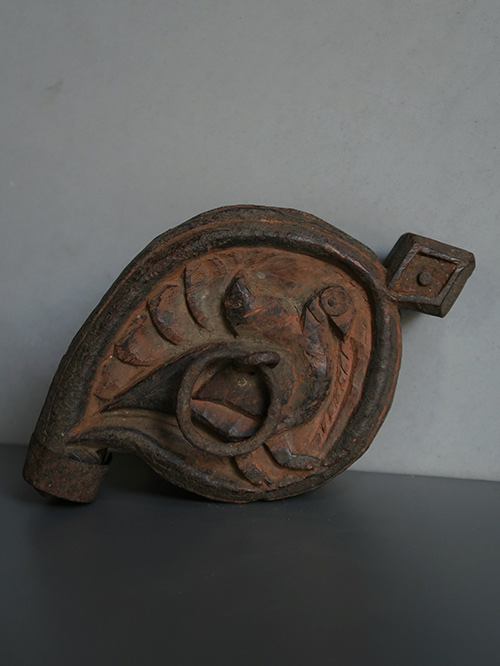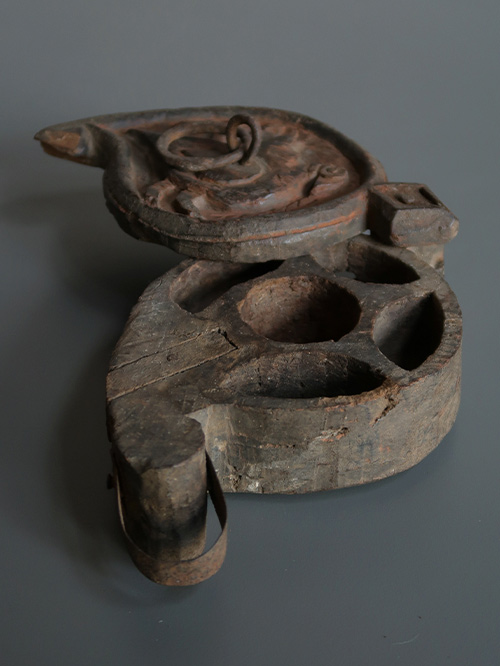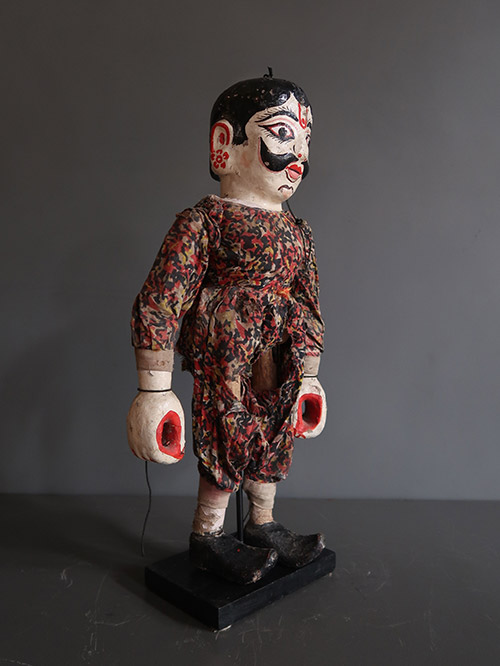Rama Pattabhishekam
Tanjore (South India)
reverse painting on glass
Rama’s coronation, Ramapattabhisheka, is one of the most popular themes of South Indian painting. The central group consists of Rama seated in lalitasana on the throne with Sita to his left; Lakshmana carrying a chamara (fly whisk) standing immediately behind him; a green-complexioned Bharata carrying a parasol standing behind Sita; Shatrugna with a fly whisk to Bharata’s left and finally, in the foreground, Hanuman lovingly supporting Rama’s right foot. On either side are groups of attendees. The group on the left consist of ascetics, the monkeys and Jambavan — here recognisable by his blue snout. On the right are a number of courtly figures. Among them should be Vibhishana, the new king of Lanka, who helped Rama in defeating Ravana, but not readily recognisable here.
Reverse glass paintings were introduced into India the late 18th century from China by way of the China Trade. Indian artists adopted the technique of reverse glass painting partly on account of its novelty and also because it was a relatively inexpensive medium which could produce rich effects. The technique proved extremely popular and soon spread through western and southern India and even to former provincial Mughal capitals of Oudh, Murshidabad.
In Tanjore – a small state with an old art tradition- a distinctive school of glass painting developed in the early 19th century and continued for more than a hundred years. The style was essential Indian – it tended to repeat patterns of regional painting: images of deities, portraits and themes form the ancient myths, secular themes such as portraits of kings or nobles, courtesans and musicians. The colour was rich and the style bold and defiant. The subjects were clearly presented with a certain opulence and glamour.
Framed Size (cms): 64(H) x 49(W)
Framed Size (inches): 25.25(H) x 19.25(W)

